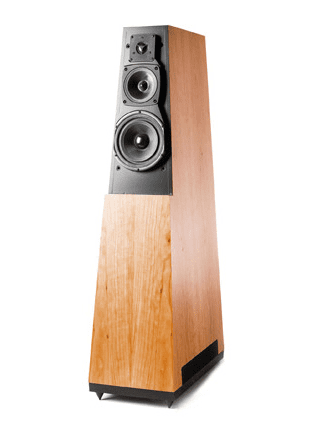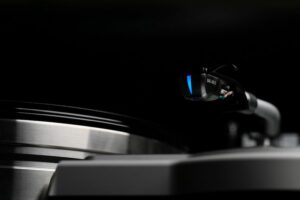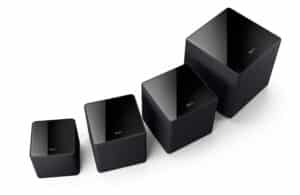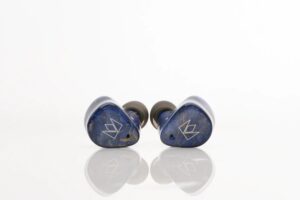Vandersteen Audio – Quatro Wood CT: HiFi Buys Review
I was a budding audiophile in my late teens. When in college, majoring in computer science, I spent a lot of my spare time at a high-end audio shop. They gave me a part time sales position and I was now truly hooked on this stuff. I personally bought and sold a lot of audio equipment over the ensuing 37 years I spent as a software engineer and executive in the IT industry. I have “retired” from that phase of my career and reentered the audio industry, which I have been truly passionate about all my life.
You know when you first wake up in the morning and you immediately attempt to open your eyes but things are just a bit blurry? You rub them, blink a few times and then eventually, clarity! You can see properly. Listening to Vandersteen Audio’s Quatro Wood Carbon Tweeter (CT) is the equivalent of rubbing your eyes and blinking a few times. After listening to music through these speakers, you will realize the clear musical experience you’ve been missing out on. This week, we are excited to tell you more about Vandersteen Audio’s Quatro Wood CT speakers.
These speakers have many unique technologies setting them apart from other speakers on the market. The three most distinguishing concepts are:
1. A tunable bass system
A common issue with speakers in a listening room is that the sound frequencies in the bass region (bass notes) don’t interact with the room in a linear fashion. The room and speaker interaction can cause some bass notes to have a “boost” where they are relatively louder than other bass notes. Conversely, some bass notes have a “suck out,” where they are relatively softer than the other bass notes. One solution to this problem is to put expensive and visually unattractive sound treatments in the room. Another is to process the audio signal with digital room correction and lose your pure analog signal path from turntable to speakers. Vandersteen makes the only speakers in the industry, which allow you to tune the bass system for each speaker and its position in the room in the analog domain. Each speaker has eleven different bands of analog bass equalization (from 20hz to 120hz) that can be adjusted to bring down the level of the “boosted” bass notes and bring up the level of the “sucked out” bass notes.
2. Time-and-phase accurate technology
Time-and-phase accurate speakers just have an amazing “rightness” to their sound. Everything flows from them with ease and effortlessness. However making a speaker that is time-and-phase accurate is not easy or effortless. As a result, there are very few companies that make them any more. Time-and-phase accuracy requires a combination of:
- A physical alignment and placement of drivers in a specific position in the speaker cabinet.
- A first order crossover network that preserves the timing and phase of the audio signal as it divides it out between the multiple drivers in the speaker cabinet.
Why is this important? When the timing and phase of audio frequencies are preserved to arrive at your ears in your listening position the way it was at the recording, you pick up on that. Your brain is very sensitive to this and it makes your listening experience more musically engaging, and reduces what we call “brain pressure”. This is an innate feeling that something is wrong with the music, especially over extended listening sessions.
Why is it hard to do? With a first order crossover network, and its 6dB per octave slope, each driver has to cover a wider range of frequencies than it would if the crossover were 2nd, 3rd or 4th order in design. Drivers used in a first order network cost more to design and build and most manufacturers have opted to keep costs down and not design this way.
3. Built in bass amplifier
Quatro Wood CT’s also have a built in 250 watt bass amplifier dedicated to its two 8” carbon loaded cellulose bass drivers in each cabinet. Vandersteen implements this built in powered subwoofer in a way like no other manufacturer. There is a Vandersteen passive crossover placed between the preamp and power amp in your system. This is also a first order crossover that employs a curve that reduces the amplitude of the bass frequencies below 100hz. This keeps the main amplifier from having to work so hard to reproduce the deepest bass notes. When the signal reaches the bass amplifier in the speaker, the curve is reversed (restored) so that the speakers’ purpose-built bass amp reproduces those frequencies from 100hz down.
We are really excited about Vandersteen Audio’s Quatro Wood CT. Personally, I was so impressed after installing and tuning these speakers for our customers that I bought a pair for myself. I have owned over sixteen pairs of speakers in my life and couldn’t imagine owning another pair that I couldn’t tune the bass in this way. Come in to HiFi Buys and take a listen so you can experience these advanced technologies for yourself!
About Vandersteen:
Richard Vandersteen started his company in 1977 out of his love for music and his desire to achieve a deeper connection with music than what was available at the time. He did not set out to make time-and-phase accurate speakers. Instead he arrived at their design from extensive live-versus-recorded listening experiment. Vandersteen constantly evaluates technology and continuously refines their speakers for the highest quality listening experience.





